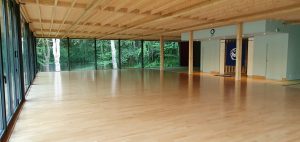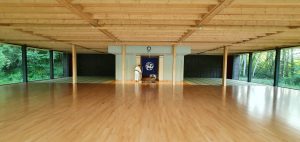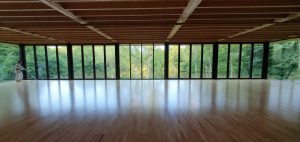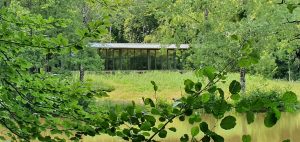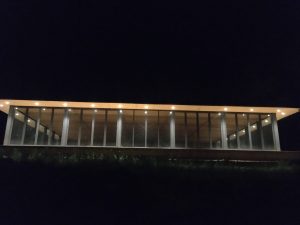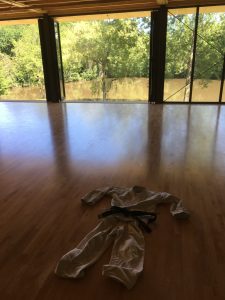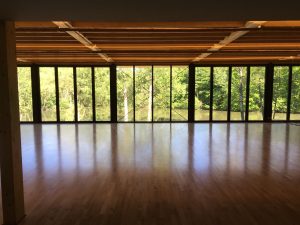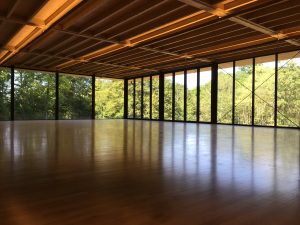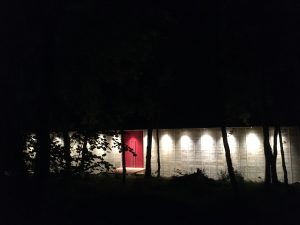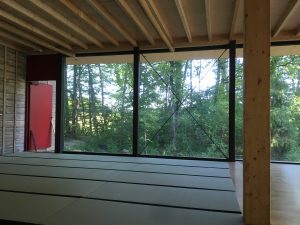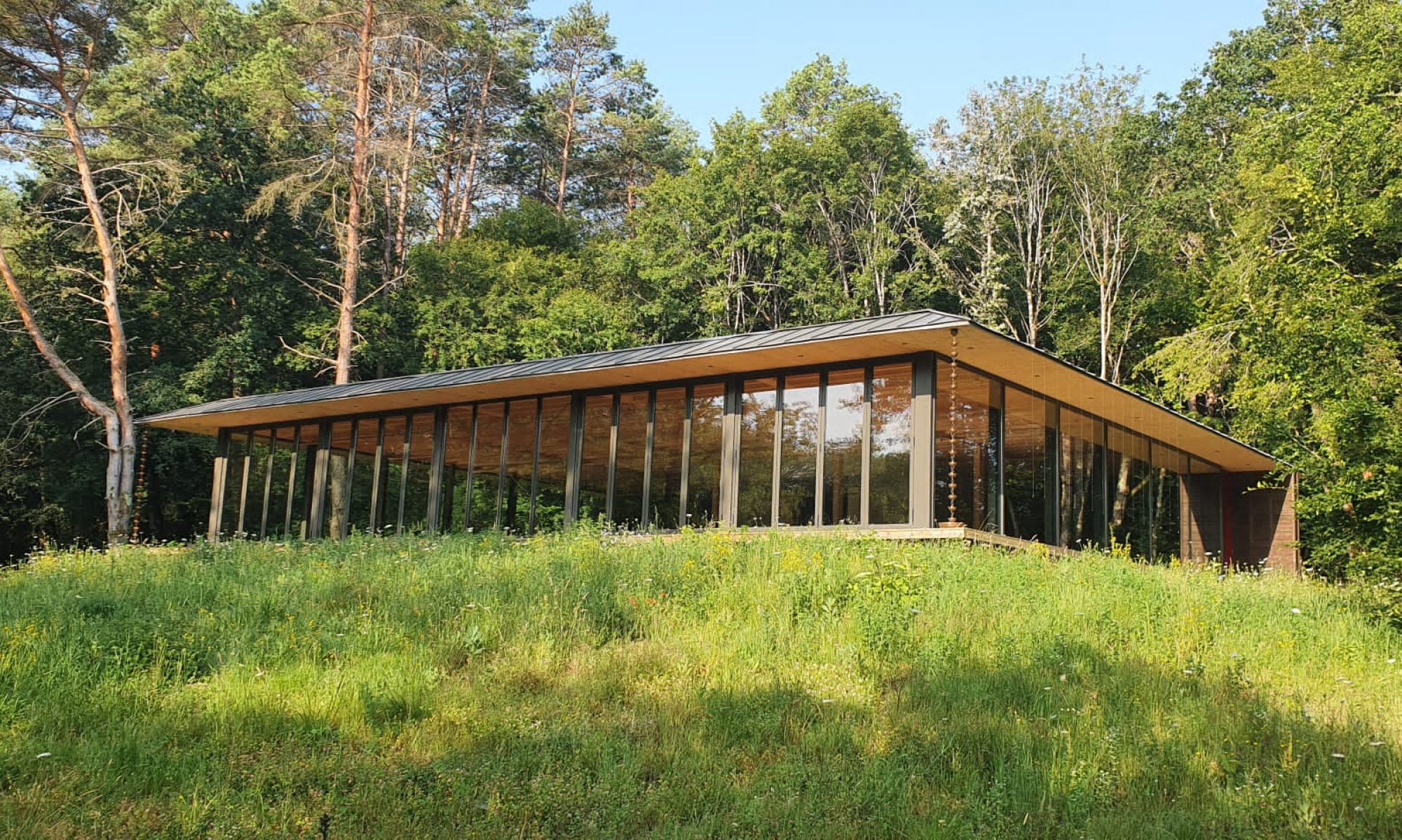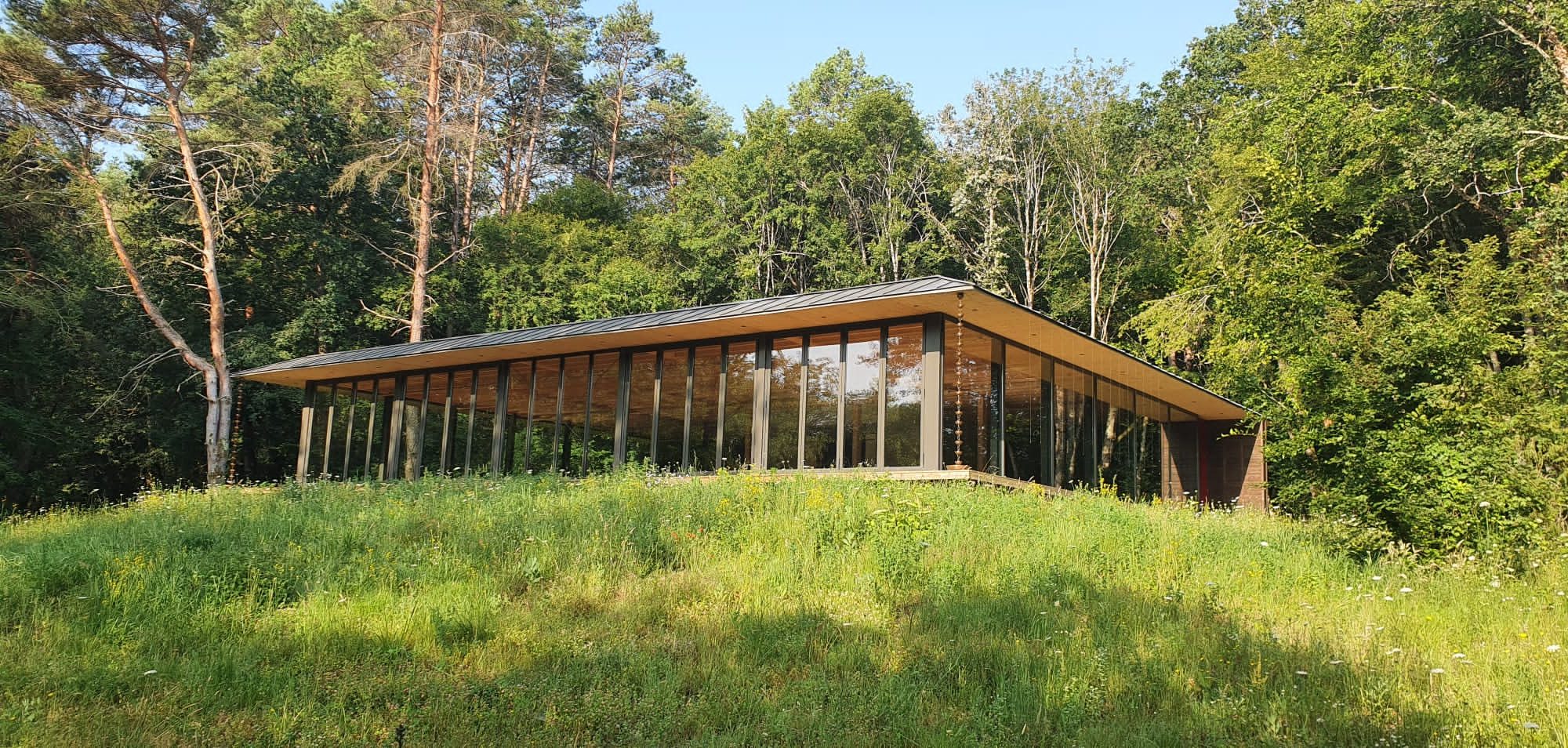Designed by architect Alain Gabrielli (France Shotokan Shihan, who also designed SKA dojo in Santa Barbara), the dojo erected on a clearing is made of wood and glass and is overlooking a 5,000sq meter pond.
Its “special dojo” beech wood parquet surface is 200 sq meters (2,150 sq ft). There are also two tatami surfaces of 40 sq meters each (430 sq ft). The dojo wood floor surface may be covered with tatami if needed.
The dojo is dedicated to the practice of disciplines. It’s a place for sharing, training and exploring, and must be respected as such. It is not a shrine, not even a gym, but it is more a shrine than a gym.
Footwear is not allowed. Shoe lockers are located at the dojo’s entrance.
At the end of each session and as practiced in Japan, the Dojo must be cleaned by its users, and made ready for the next session.
(Sensei Tsutomu Ohshima, anecdote from an interview posted on www.shotokai.com page:
« During the 50s, when we finished practice, I cleaned up the dojo myself.’ Everyone was watching, but I never asked them to do it. Some of the American students said, “Hey Mr. Ohshima, you like cleaning, eh?” I said, “Yes.” I didn’t ask them and just kept cleaning. I said, “We had a habit of cleaning, because it means I appreciate the place that gave me a chance to practice.
Polishing the floor is cleaning my own mind. That’s what I learned and I thought someday these guys will understand. After a few months, the American students know they should, but they don’t want to work. But they started to follow me. After one or two years, everyone wanted to clean. After finishing practice, the black belts rush to clean and the white belts are watching and white belts start to think, “The black belts are doing it, so I’d better.”
It’s not “Hey you white belts, go clean!” We don’t have slaves in this country. The top guy has to work harder. That’s why other people will respect and follow him.“.)
